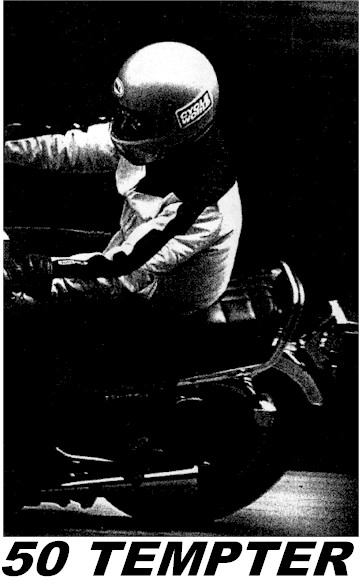| Reprinted from the July 1983 issue of Cycle World | ||
 |
Suzuki's Full-Floater suspensions position spring and damper at the forward end of the swingarm. The suspension unit is mounted low, between the sides of the swingarm and just behind the pivot. Arms extend from the swingarm to the bottom of the shock for one attachment, while other arms from the swingarm push a rocker that compresses the other end of the shock. The links are arranged so the suspension becomes stiffer, the more the rear wheel moves upward. When lightly loaded or hitting small bumps, the suspension can be very soft. As the suspension is compressed it takes progressively more effort, so it doesn't bottom easily. Some of the new Suzukis add a variety of adjustments to the single shock. Not the 650. Only preload on the coil spring can be adjusted, though that is easy. A small knob on the right side of the bike, above the engine cases, can be screwed into its housing, pushing hydraulic fluid through a hose and into a container at the base of the rear spring. This creates a remote preload adjustment that doesn't take any tools to operate. Not only is this suspension more progressive than conventional suspensions, the packaging may be even more important. Springs and dampers are heavy, and on the GR650 these parts are as low as possible and farther forward than they would be on a conventional twin-shock bike. They're also out of the way for installing saddlebags and low enough not to interfere with the battery or airbox, both of which are easily accessible under the lift-off seat. Front suspension is more conventional forks, with air caps icluded for adjustments to the spring rate. This is one of the differences between the fancier GR650 and the lower cost GR650X model. The X doesn't have air caps, two-tone paint, cast wheels or the small running light in front. Suspension travel is about average, 5.5 in. in front and 4.3 in. back. You'd never guess this riding the Suzuki. There is a feel of suppleness not found on most motorcycles as the GR650 glides over bumps and dips. Sit on the Suzuki and | |